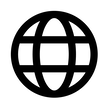Resultados de búsqueda - (((ligur OR line) OR ((ligan OR (llenando OR (ligand OR sign))) OR laura)) OR ligule) 1
Materias dentro de su búsqueda.
Materias dentro de su búsqueda.
- 4
- Covid-19 4
- desarrollo local 4
- innovación 4
- Aprendizaje 3
- Emprendimiento 3
- Empresa familiar 3
- I20 3
- Scrap 3
- TIC 3
- local development 3
- 5 why 2
- Advertising 2
- Calidad 2
- Digital 2
- I21 2
- Internet 2
- Ishikawa diagram 2
- L. vannamei 2
- Mexico 2
- México 2
- Pareto Diagram 2
- Pobreza 2
- Publicidad 2
- Quality 2
- Quality Rate 2
- TiO2 2
- Universidad 2
- análisis sensorial 2
- biodiversidad 2
-
1
Expression of CCR5, CXCR4 and DC-SIGN in Cervix of HIV-1 Heterosexually Infected Mexican Women
Publicado 2012“…Results: Expression rates for mRNA of CCR5 (median 1.82; range 0.003–2934) were higher than those observed for CXCR4 (0.79; 0.0061–3312) and DC-SIGN (0.33; 0.006–532) receptors (p < 0.05). …”
Enlace del recurso
Artículo -
2
Another one that extends the toe: the Austregésilo-Esposel sign Uno más que extiende el primer ortejo: el signo de Austregésilo-Esposel
Publicado 2021“…With great interest we read the article by Novis and colleagues recently published in Arquivos de Neuro-Psiquiatria1. Where they present the life and work of Professor Faustino Esposel, considered the father of Brazilian neurology, who along with Antõnio Austregésilo, described a substitute sign for Babinski’s phenomenon eliciting of the extensor plantar response upon squeezing of the thigh: “Le phénomene de Babinski, provoqué par l’excitation de la cuisse”, now known as the Austregésilo-Esposel sign2. …”
Enlace del recurso
Artículo -
3
La Retroalimentación como factor indispensable en la educación on-line
Publicado 2014Enlace del recurso
Artículo -
4
Expresión del receptor de células dendríticas DC-SIGN en la inmunopatología del VIH/SIDA
Publicado 2008“…Estas últimas son cruciales en la defensa contra agentes infecciosos y juegan un papel importante en la infección por VIH-1. Recientemente se ha demostrado que el DC-SIGN es el responsable de mediar la infección a las células T a través de CD, utilizándolas como portadoras y permitiendo que el virus tenga acceso al tejido linfático. …”
Enlace del recurso
Artículo -
5
-
6
-
7
Ligand effects on the optical and chiroptical properties of the thiolated Au18cluster.
Publicado 2016Enlace del recurso
info:eu-repo/semantics/article -
8
Fluoride Ion as Ligand and Hydrogen Bond Acceptor: Crystal Structures of Two Dinuclear CuII Complexes Built on a Diazecine Template
Publicado 2012“…Two dinuclear CuII complexes based on a diazecine ligand were characterized by X-ray diffraction, one of which includes the rare CuII–F bond, resulting from dissociation of a BF4 − ion. …”
Enlace del recurso
Artículo -
9
-
10
-
11
-
12
-
13
Arbitraje de consumo: un largo camino hacia el arbitraje on-line internacional
Publicado 2011Enlace del recurso
Sección de libro. -
14
-
15
-
16
-
17
-
18
-
19
-
20


